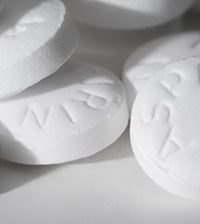- Fragments of Bird Flu Virus Found in U.S. Milk Supply
- There’s an ‘Epidemic’ of Loneliness Among U.S. Parents, Poll Finds
- Infertility Is Rising Among Young Married Women
- New Rules Mean 3.6 Million Americans Could Get Wegovy Via Medicare, Costing Billions
- ‘Dream It, Be It?’ Study Finds Teens Who Focus on Life Goals Often Succeed
- Trying ‘Magic Mushroom’ Drug to Ease Depression? It Has Side Effects
- $282 Billion: What Mental Illness Costs America Each Year
- Black, Hispanic Americans Getting Savvier About CPR
- Kids With Common Skin Conditions Face Stigma, Bullying
- Science Reveals How Aspirin Prevents Colon Cancer
Surgical ‘Glue’ May Help Repair Sick Children’s Hearts


Researchers have developed a new type of surgical “glue” that they say could help treat children born with heart defects, such as a hole in the heart.
The adhesive can quickly stick biodegradable patches inside a beating heart. Unlike current surgical adhesives, this new glue keeps up its powerful sticking power in the presence of blood and at increased heart rates and blood pressure, according to the findings of a study in pig hearts.
“The adhesive was strong enough to hold tissue and patches onto the heart equivalent to suturing,” study co-first author Dr. Nora Lang, of the department of cardiac surgery at Boston Children’s Hospital, said in a hospital news release.
“About 40,000 babies are born with congenital heart defects in the United States annually,” study co-senior author Jeffrey Karp, of the Brigham and Women’s Hospital’s biomedical engineering division, explained in the same release. He said, “those that require treatment are plagued with multiple surgeries to deliver or replace non-degradable implants that do not grow with young patients.”
Co-senior author Dr. Pedro del Nido, chief of cardiac surgery at Boston Children’s Hospital, said that the new surgical glue “addresses all of the drawbacks of previous systems in that it works in the presence of blood and moving structures.”
He believes the adhesive will “provide the physician with a completely new, much simpler technology and a new paradigm for tissue reconstruction to improve the quality of life of patients following surgical procedures.”
The adhesive is activated by ultraviolet light and provides an anti-bleeding seal within five seconds of UV light application when applied to high-pressure large blood vessels and heart wall defects, according to the study published Jan. 8 in the journal Science Translational Medicine.
“The adhesive patch is biodegradable and biocompatible, so nothing foreign or toxic stays in the bodies of these patients,” Lang noted.
Two heart surgeons said the technology could become a real asset.
“This new adhesive may expand our ability to perform minimally invasive surgical techniques to correct various cardiac defects,” said Dr. Ralph Mosca, professor of cardiac surgery at NYU Langone Medical Center in New York City.
“Basically, wherever patches are currently stitched into place within or onto the heart, this new adhesive used alone or in combination with more traditional patches could not only reduce operating time but potentially help doctors repair and close defects that might be in difficult-to-reach locations,” Mosca said.
Dr. Konstadinos Plestis is director of aortic surgery at Lenox Hill Hospital in New York City. He said that while the new glue requires further testing, especially when it comes to long-term outcomes, it “has the potential to facilitate repairs and surgeries inside the heart, facilitate minimally invasive procedures, reduce operative times, and possibly improve the outcome of cardiovascular procedures.”
The adhesive technology has been licensed to a French company, which expects to have the adhesive on the market within two to three years.
More information
The U.S. National Heart, Lung, and Blood Institute has more about heart birth defects.
Source: HealthDay
Copyright © 2024 HealthDay. All rights reserved.










